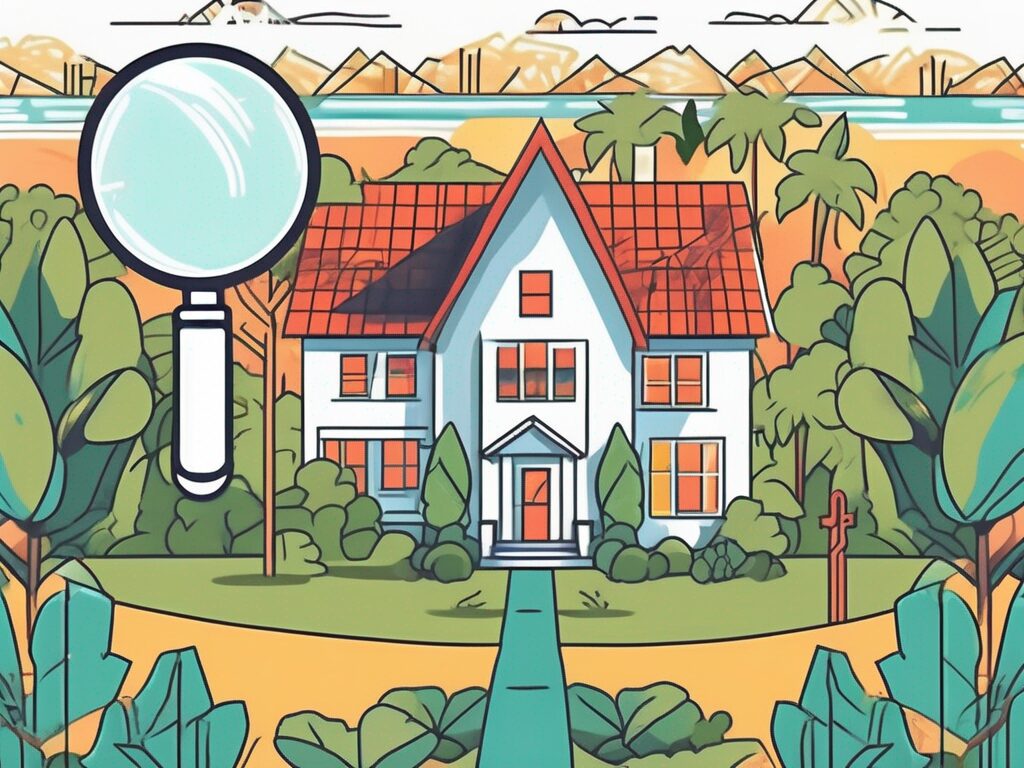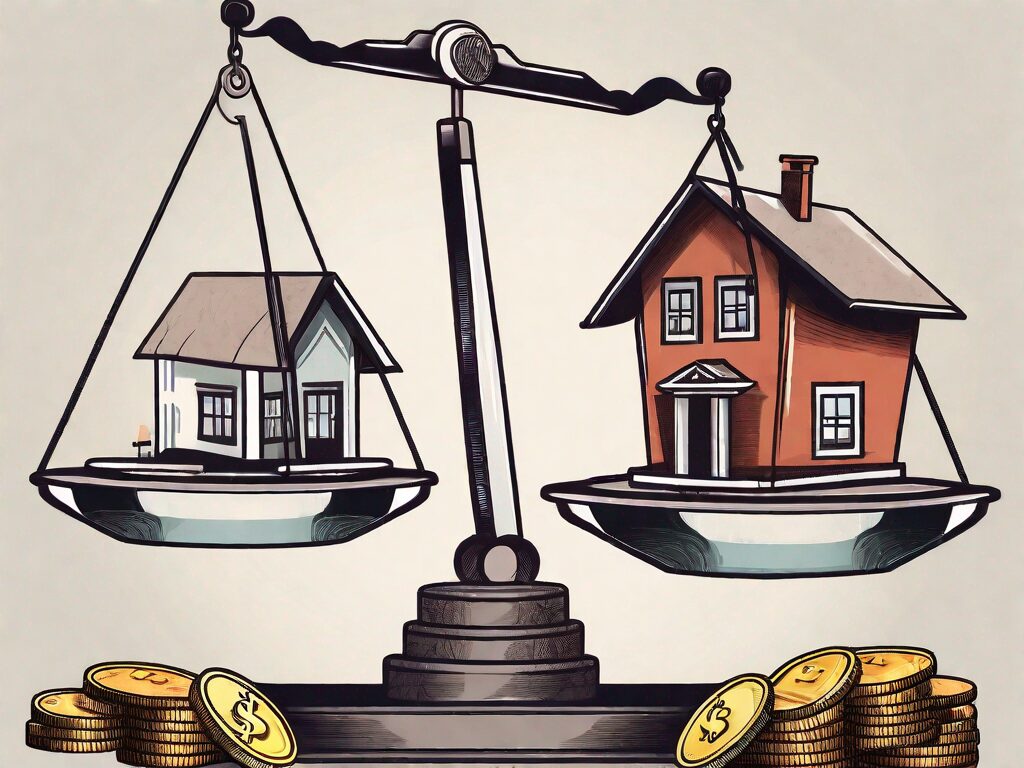
Agent A-Team or Solo Superhero? Finding the Right Real Estate Partner for Your Selling Journey in Wildwood Florida
When it comes to selling your home in Wildwood, Florida,…
January 29, 2024
In the realm of home financing, fixed-rate mortgages have become a popular choice for many homeowners looking for stability and peace of mind. With a fixed-rate mortgage, the interest rate remains constant throughout the entire term of the loan, providing borrowers with predictability and the ability to plan their finances accordingly. This comprehensive guide aims to enlighten you about the basics of fixed-rate mortgages, the various types available, the steps involved in obtaining one, and the pros and cons associated with this type of mortgage. So, whether you are a first-time homebuyer or someone looking to refinance, read on to gain a deeper understanding of fixed-rate mortgages and determine if this type of loan is the right fit for you.
Before delving into the intricacies of fixed-rate mortgages, it is essential to grasp the foundational concepts that underpin this type of loan. The primary characteristic of a fixed-rate mortgage is that the interest rate stays constant for the duration of the loan term. This means that regardless of any fluctuations in the broader mortgage market, your monthly mortgage payment remains unaffected. It offers stability and can be particularly beneficial when interest rates are expected to rise.
When you obtain a fixed-rate mortgage, your lender calculates your monthly mortgage payment based on several factors. These include the loan amount, the interest rate, and the term of the loan. By maintaining a fixed interest rate, your monthly payment remains the same regardless of market conditions. Whether interest rates soar or plummet, you can sleep soundly knowing that your mortgage payment will not change, providing you with financial security and simplicity.
But what exactly goes on behind the scenes when you secure a fixed-rate mortgage? Let’s explore the inner workings of this popular loan option.
When you apply for a fixed-rate mortgage, your lender carefully assesses your financial situation to determine the interest rate they are willing to offer you. Factors such as your credit score, income, and the current market conditions play a crucial role in this evaluation process. The lender wants to ensure that you are a reliable borrower and can comfortably afford the monthly payments.
Once you settle on a fixed-rate mortgage, you enter into a loan agreement that outlines the terms and conditions. This agreement includes the loan duration, monthly payment amount, and the fixed interest rate. The clarity provided by these terms allows you to plan your budget effectively and make long-term financial decisions with confidence.
Imagine the peace of mind that comes with knowing that your mortgage payment will remain the same throughout the entire loan term. Even if interest rates rise in the future, you won’t be affected. This stability is particularly advantageous for homeowners who prefer predictability and want to avoid any surprises in their monthly expenses.
Now, let’s dive deeper into the mechanics of a fixed-rate mortgage. When you make your monthly mortgage payment, a portion of it goes towards paying off the principal amount borrowed, while the rest covers the interest charged by the lender. In the early years of the loan term, a larger portion of your payment goes towards interest, gradually shifting towards paying off the principal as time goes on.
One of the key advantages of a fixed-rate mortgage is that it allows you to budget effectively. With a consistent monthly payment, you can plan your finances and allocate your resources accordingly. This stability is particularly valuable for individuals and families who prefer a structured approach to their financial obligations.
Another benefit of a fixed-rate mortgage is that it offers protection against inflation. As the cost of living increases over time, your fixed mortgage payment remains the same. This can provide a sense of relief, knowing that your housing expenses won’t rise with inflation, allowing you to maintain your standard of living.
In conclusion, a fixed-rate mortgage offers stability, predictability, and financial security. By understanding the inner workings and mechanics of this type of loan, you can make informed decisions about your homeownership journey. Whether you are a first-time homebuyer or looking to refinance, a fixed-rate mortgage can provide you with peace of mind and the ability to plan your financial future with confidence.
When considering a fixed-rate mortgage, it is crucial to understand how the costs are calculated. By having a clear picture of the financial implications, you can make an informed decision and ensure that this type of mortgage aligns with your financial goals.
Fixed-rate mortgages offer stability and predictability, making them a popular choice among homeowners. With a fixed-rate mortgage, your interest rate remains the same throughout the life of the loan, providing you with a consistent monthly payment that is easy to budget for.
To estimate your monthly payments for a fixed-rate mortgage, you need to consider several factors. These include the loan amount, the interest rate, the term of the loan, and any additional expenses such as property taxes and insurance. Using these variables, lending institutions employ various formulas to calculate your monthly payment, presenting you with a precise figure that remains consistent throughout the life of the loan.
For example, let’s say you are looking to purchase a home with a fixed-rate mortgage. The loan amount is $200,000, and the interest rate is 4.5% for a 30-year term. In addition, you need to factor in property taxes of $3,000 per year and insurance costs of $1,200 annually. By plugging these numbers into the mortgage calculator, you can determine that your monthly payment will be approximately $1,520.
It’s important to note that the monthly payment includes both the principal and interest, as well as a portion allocated towards property taxes and insurance. This ensures that you are not caught off guard by unexpected expenses and can plan your budget accordingly.
Aside from the monthly payments, it is also crucial to consider the total cost of a fixed-rate mortgage. This includes not only the principal and interest payments but also any associated fees such as closing costs and prepayment penalties. By looking at the bigger picture, you can make an accurate assessment of the financial commitment required.
Closing costs typically range from 2% to 5% of the loan amount and cover expenses such as appraisal fees, title insurance, and attorney fees. These costs can add up, so it’s important to factor them into your budget when considering a fixed-rate mortgage.
Furthermore, some lenders impose prepayment penalties if you decide to pay off your mortgage early. These penalties are designed to compensate the lender for the interest they would have earned if you had continued making payments for the full term of the loan. It’s essential to read the fine print and understand the terms of your mortgage agreement to avoid any surprises down the line.
By taking into account all of these factors, you can gain a comprehensive understanding of the total cost of a fixed-rate mortgage. This knowledge empowers you to make an informed decision and choose the mortgage option that best suits your financial situation and long-term goals.
When it comes to fixed-rate mortgages, different terms and types are available to cater to the diverse needs of homeowners. Familiarizing yourself with these various options ensures that you are well-equipped to make an informed decision when selecting a mortgage that aligns with your financial circumstances and objectives.
Fixed-rate mortgages are a popular choice among homeowners due to their stability and predictability. Unlike adjustable-rate mortgages, where the interest rate can fluctuate over time, fixed-rate mortgages offer a consistent interest rate throughout the life of the loan. This means that your monthly mortgage payment remains the same, providing you with peace of mind and allowing for better budgeting and financial planning.
Before diving into the different types of fixed-rate mortgages, it is essential to familiarize yourself with the jargon that surrounds this realm. From points and APRs to lock-ins and amortization, understanding these terms will empower you to navigate the complexities of fixed-rate mortgages with confidence.
Points, for example, are fees paid directly to the lender at closing in exchange for a lower interest rate. Each point typically costs 1% of the total loan amount and can significantly reduce your monthly mortgage payment over time. APR, or Annual Percentage Rate, represents the total cost of borrowing, including both the interest rate and any additional fees or charges associated with the loan. Lock-ins refer to the process of securing a specific interest rate for a certain period, protecting you from potential rate increases during that time. Amortization, on the other hand, refers to the gradual repayment of the loan principal and interest over the loan term.
Fixed-rate mortgages can vary in terms of the length of the loan and the types of interest rates offered. Common loan terms include 15-year and 30-year mortgages, each catering to different financial goals. A 15-year mortgage offers a shorter repayment period, allowing homeowners to build equity faster and pay off their loan sooner. On the other hand, a 30-year mortgage provides a longer repayment period, resulting in lower monthly payments but a higher overall interest cost over time.
In addition to loan terms, fixed-rate mortgages also offer different types of interest rates. A fully amortizing payment means that each monthly payment includes both principal and interest, gradually reducing the loan balance over time. This is the most common type of fixed-rate mortgage. However, some homeowners may opt for an interest-only payment, where the monthly payment only covers the interest portion of the loan. This can be beneficial for those who anticipate an increase in income or plan to sell the property before the principal repayment period begins.
When comparing different types of fixed-rate mortgages, it is important to consider your long-term financial goals, current financial situation, and risk tolerance. Consulting with a mortgage professional can provide valuable insights and guidance to help you make an informed decision.
Acquiring a fixed-rate mortgage involves several steps that must be followed meticulously. By understanding the process and preparing adequately, you can streamline the journey, ensuring a smooth and successful outcome.
When it comes to obtaining a fixed-rate mortgage, it’s important to have a clear understanding of the steps involved. The process begins with gathering the necessary documents. These documents typically include proof of income, bank statements, tax returns, and identification. Lenders require these documents to assess your financial situation and determine your eligibility for a mortgage.
Once you have gathered all the necessary documents, the next step is to apply for the loan. This involves filling out an application form provided by the lender. The application form will require you to provide detailed information about your employment history, income, assets, and liabilities. It’s crucial to be accurate and honest when filling out the application form, as any discrepancies or false information could lead to delays or even rejection of your mortgage application.
After submitting your application, the lender will initiate the underwriting process. During this stage, the lender will review your application, assess your creditworthiness, and determine the terms and conditions of your mortgage. The underwriting process involves a thorough evaluation of your financial history, credit score, and debt-to-income ratio. It may also involve verifying the information provided in your application and conducting a home appraisal to determine the value of the property you intend to purchase.
From gathering the necessary documents to applying for the loan and going through the underwriting process, obtaining a fixed-rate mortgage requires careful attention to detail. By following a step-by-step guide specific to fixed-rate mortgages, you can navigate the process confidently, avoiding common pitfalls along the way.
One important step in securing a fixed-rate mortgage is to research and compare different lenders. It’s essential to shop around and obtain quotes from multiple lenders to ensure you get the best possible terms and interest rates. By comparing offers, you can make an informed decision and choose the lender that best suits your needs.
Another crucial step is to get pre-approved for a mortgage. Pre-approval involves the lender assessing your financial situation and determining the maximum amount they are willing to lend you. This step not only gives you a clear idea of your budget but also strengthens your position as a serious buyer when making an offer on a property.
Once you have been pre-approved, it’s time to find the right property. Working with a real estate agent can be beneficial in this process, as they have access to a wide range of properties and can help you find one that meets your needs and budget. When you find a property you are interested in, you can make an offer, and if accepted, proceed with the mortgage application.
Securing approval for a fixed-rate mortgage involves meeting specific criteria and demonstrating creditworthiness. By adopting certain strategies and adhering to sound financial practices, you can enhance your chances of getting approved, ensuring that you secure the mortgage that you desire.
One important tip is to maintain a good credit score. Lenders consider credit scores when assessing mortgage applications, and a higher credit score can increase your chances of approval and help you secure better interest rates. To maintain a good credit score, it’s important to pay your bills on time, keep your credit card balances low, and avoid opening new lines of credit unnecessarily.
Another tip is to save for a down payment. While it’s possible to obtain a mortgage with a small down payment, having a larger down payment can improve your chances of approval and help you avoid private mortgage insurance (PMI). Saving for a down payment shows lenders that you are financially responsible and committed to the mortgage process.
Additionally, it’s important to minimize your debt-to-income ratio. Lenders consider your debt-to-income ratio when evaluating your mortgage application, and a lower ratio indicates that you have more disposable income available to make mortgage payments. To reduce your debt-to-income ratio, consider paying off outstanding debts and avoiding taking on new debt before applying for a mortgage.
In conclusion, navigating the process of obtaining a fixed-rate mortgage requires careful attention to detail and thorough preparation. By understanding the steps involved, following a step-by-step guide, and implementing tips to enhance your chances of approval, you can successfully secure the mortgage that suits your needs and achieve your homeownership goals.
Like any financial product, fixed-rate mortgages come with their own set of advantages and disadvantages. Understanding these pros and cons is crucial to deciding whether this type of mortgage aligns with your financial objectives and risk tolerance.
One of the primary advantages of a fixed-rate mortgage is the stability it provides. With a fixed interest rate, you can accurately determine and plan for your monthly mortgage payment. Additionally, fixed-rate mortgages protect you from potential increases in interest rates, providing peace of mind. However, fixed-rate mortgages may have higher initial interest rates compared to adjustable-rate mortgages, so it is essential to carefully consider your long-term financial goals before making a decision.
Determining whether a fixed-rate mortgage is the right choice for you depends on various factors, including your financial goals, risk appetite, and market conditions. By carefully evaluating these considerations and weighing the pros and cons, you can confidently determine if a fixed-rate mortgage suits your unique circumstances.
When deciding on a mortgage, you may come across adjustable-rate mortgages as an alternative to fixed-rate mortgages. Understanding the differences between these two options is vital to selecting the mortgage that best aligns with your needs and preferences.
Unlike fixed-rate mortgages, adjustable-rate mortgages (ARMs) have interest rates that fluctuate over time. These fluctuations are predetermined, either linked to a specific financial index or based on the lender’s discretion. Adjustable-rate mortgages typically start with a fixed-rate period, after which the interest rate adjusts periodically, often annually. Understanding the variance between fixed-rate and adjustable-rate mortgages will empower you to make an educated decision and secure a mortgage that is tailored to your individual requirements.
By thoroughly familiarizing yourself with the basics, types, and rates of fixed-rate mortgages, you are in a stronger position to make informed decisions about your home financing options. Whether you opt for the stability provided by fixed-rate mortgages or explore alternatives such as adjustable-rate mortgages, the knowledge gained from this comprehensive guide will guide you through the intricacies of the mortgage market, allowing you to secure the loan that best suits your circumstances. With careful planning and consideration, you can navigate the path to homeownership confidently and embark on a bright future in your dream home.

If you want the Richr team to help you save thousands on your home just book a call.
 Book a call
Book a call